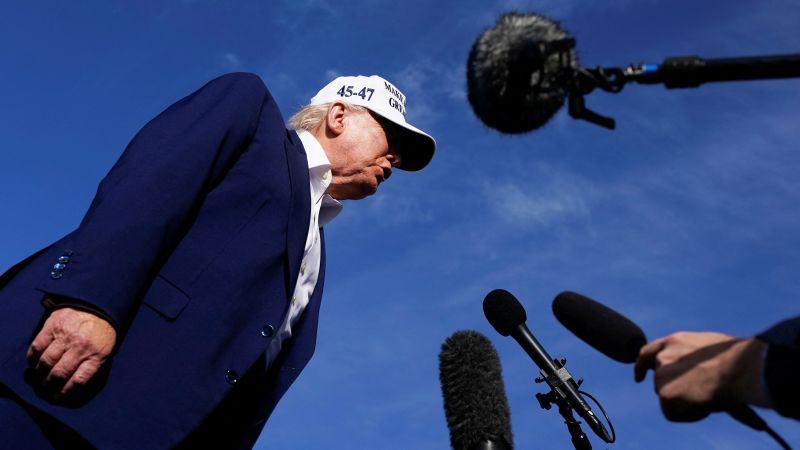In a surprising turn of events, President Donald Trump reignited a contentious and market-sensitive trade dispute with the European Union (EU) on a Friday. This unexpected move took many European officials and even some of his own senior advisors by surprise. The decision came following a period of lengthy negotiations that had been growing increasingly frustrating for the White House.
Just days later, Trump seemed to achieve the initial response he desired. Through a post on his Truth Social account, he announced that the EU had expressed a willingness to establish meeting dates quickly, characterizing it as a “positive event.” Such a statement indicated a potential shift in the dynamics of the ongoing trade talks between the U.S. and the bloc of 27 countries.
The backdrop to this intense interaction was rooted in the escalating frustration among U.S. officials regarding the pace of the trade negotiations. Several advisors within Trump’s administration felt that the discussions needed a substantial jolt to rectify the stagnancy, although they did not specify how such a shake-up would manifest. Kevin Hassett, the National Economic Council Director, noted that while the broadside from Trump was expected, it ultimately rested upon the president’s decision-making process regarding the negotiated terms.
As high-level conversations unfolded between Trump’s administration and their European counterparts, it became clear that the slow pace of these talks had become a source of tension. While U.S. officials privately communicated this urgency, no explicit threats or deadlines were issued. European diplomats pointed out that, although the pace might seem sluggish, trade negotiations typically require a methodical approach, which the EU was adhering to.
The U.S. side also had its set of grievances. European negotiators were often seen as presenting excessive demands without a clear outline of acceptable proposals, frustrating their American counterparts. Nonetheless, some officials within Europe tentatively thought that a detailed term sheet presented to the Trump administration could indicate meaningful progress that might alleviate some of the White House’s frustrations.
Prior to Trump’s announcement of potential tariff increases, U.S. Trade Representative Jamieson Greer expressed the necessity for more concrete proposals. However, the offer provided by the EU diverged significantly from the U.S. negotiating priorities. This disconnect marked the stage for an impending phone call between Greer and Maros Sefcovic, the chief trade negotiator for the EU.
As the conversation was set to take place on May 23rd, Trump’s pre-emptive social media post added tension to an already fraught situation. In that post, the President expressed dissatisfaction with the pace of discussions, leading him to recommend a dramatic increase in tariffs on EU imports. This escalation sent markets into a tailspin as anxiety over renewed trade hostilities resurfaced.
In the hours following Trump’s announcement, there was a noticeable lack of explanation from the White House regarding the sudden shift in policy. This uncertainty only compounded the market’s reaction. Notably, Treasury Secretary Scott Bessent later hinted in a television interview that Trump was disappointed with the quality of proposals from the EU, suggesting that the tariffs aimed to incentivize improved negotiations.
This insight raised questions within the financial community about Trump’s tariff threats: were they intended as pressure tactics or sincere threats? Bessent’s statements appeared to indicate a belief in the latter while also acknowledging that Trump’s clarity on the issue seemed inconsistent.
Moreover, Bessent, who had recently participated in G7 meetings, had not signaled any forthcoming escalation in discussions with European officials. His remarks from earlier meetings demonstrated a commitment to productive dialogue, yet the ultimate outcome remained unsteady in the wake of Trump’s tariff declaration.
The impending negotiations were thus framed within a context of cautious optimism and mounting skepticism, characterized by the realities of dealing with a large and often fragmented group such as the EU. While some within the Trump administration heralded the positive direction of talks, they also expressed the essential need to retain leverage, as Trump reiterated his capacity to impose significant tariffs if negotiations faltered.
In these ensuing weeks, both the U.S. and EU identified a window for negotiations that would underlie future discussions, with each side hoping to overcome barriers that had long hindered a comprehensive trade agreement. As talks progressed, it remained evident that both negotiation pressure and the potential for escalated trade conflict loomed as central themes in these high-stakes discussions.



